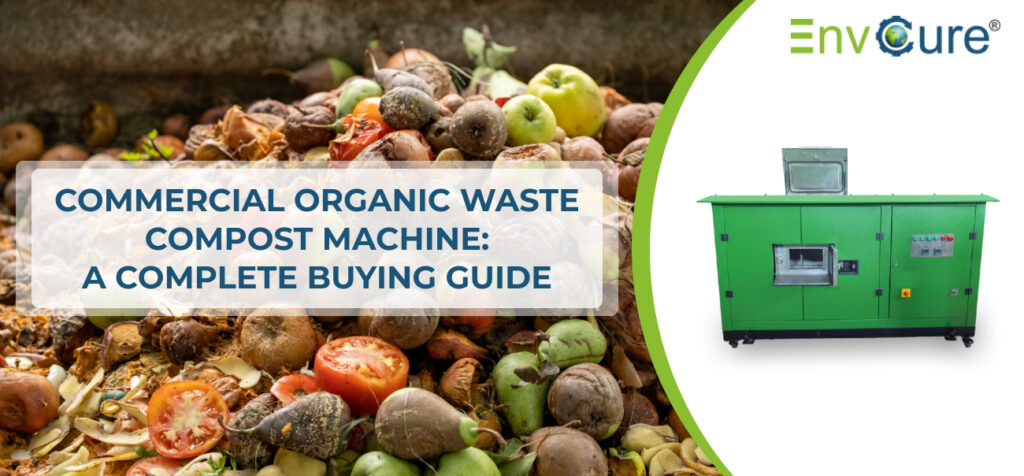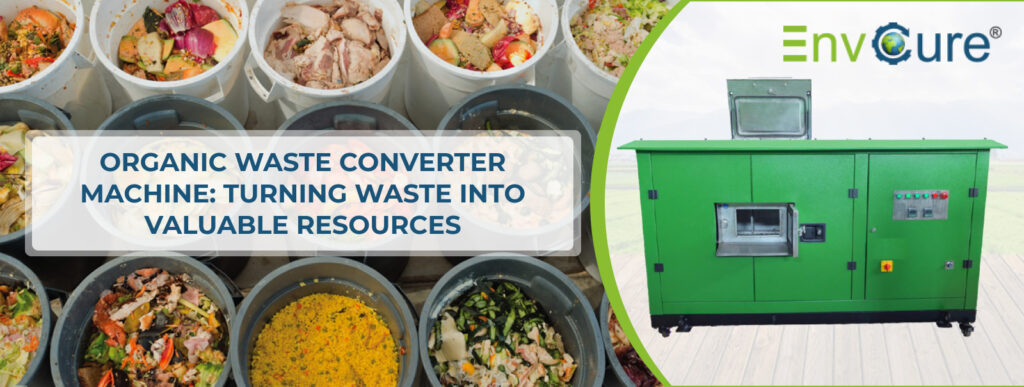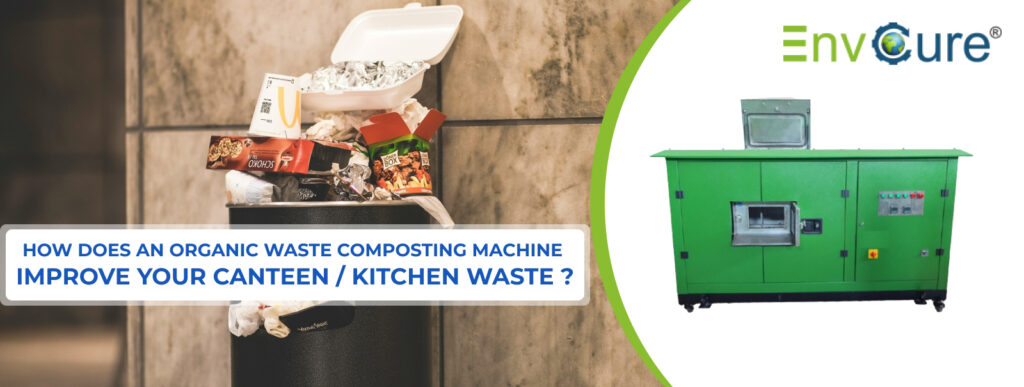An onsite organic waste composter is a self-contained unit that changes food scraps and other biodegradable waste into very fine compost within a day or two. Instead of having the waste landfilled, businesses may do some conversion of kitchen or garden waste on-site, with a whole lot of advantage of odor reduction and reduction in waste volume, while producing very valuable soil amendment. Such composting machines are used by industries such as hotels, restaurants, hospitals, and corporate cafeterias to achieve sustainability targets and reduce waste hauling fees. Ready to reduce your waste bill costs? Request a quotation today and start through conversion from waste to wealth.
Why Use an Organic Composting Machine?
Investing in an organic waste compost machine brings instant benefits:
- Cut Waste Disposal Costs: Organic waste composter cuts waste going to landfill by large volumes and thus holds fees for garbage pickup. The organic waste you would pay to dispose of is instead turned into compost you can either use or sell. As an industry report says, for every $1 spent on food-waste reduction, $7 can be saved in operating costs.
- Generation of Valuable Compost: The nutrient-rich compost is used for enhancing soil in gardens or agricultural land. Such a “waste-to-resources” movement therefore requires little or no commercial fertilizers. High-quality compost ensures a secondary source of income if sold directly to local farmers or gardeners.
- Regulatory Compliance: The on-site treatment of organic waste ensures a reduction of methane emissions from landfills while also meeting waste-management regulations. Such companies can claim green leadership through closure of food-waste loops, thereby improving their ESG and zero-waste badges.
- Odor and Pest Control: Modern composters are ergonomically designed systems, with air filters and air scrubbers, which are completely odorless and hygienic, keeping pests at bay away from kitchens and facilities. This in turn maintains hygiene, in addition to morale, among the employees of institutional kitchens and dining halls.
- Simple to Operate & Requires Low Maintenance: Commercial organic waste composter is, by and large, automatic. A fully automatic model will shred and mix the waste simply by pressing a button; the semi-automatic ones have fewer operator controls. All types greatly reduce manual labor as compared to the traditional compost pile.
Such equipment can be strategic mechanisms in organic waste management. According to EnvCure, an organic waste composter “reduces the landfill waste and greenhouse gas emissions” with the ulterior aim of producing good compost which may be used for landscaping or resale.
Can an organic waste compost machine help you meet SWM Rules? Find out here.
How Organic Waste Composter Work
Organic composting machines use an aerobic (with oxygen) process of breaking down food waste in a short time. Normally the following steps are involved:

- Feeding Waste: Food scraps are picked up in kitchens and canteens and fed into the machine through the hopper. (Waste like plastics or metals has to be removed first.)
- Shredding & Mixing: Most units (especially the fully automatic ones) come with machinery inside to do an initial shredding of waste into tiny pieces for quicker digestion. The drum or internal mixing mechanism then keeps on agitating the materials to allow for even decomposition.
- Composting Chamber: Placed inside a sealed, insulated chamber, aerobic microbes slowly break down the organic matter. Temperature sensors and aerators control temperature, aeration, and moisture for optimum processing. The output is much quicker than a simple compost heap, normally, it takes 24 to 48 hours to put something together.
- Compost Output: This is a soil-like loam with which moisture drainage is considered different, and it is a free pathogen level. The machine removes any odors through its process, so there is no trace of bacteria in the output-its safe for all kinds of handling. The users can then scoop or dump the compost onto planters, gardens, or general landscaping.
Modern organic waste composter transforms “trash” into a useful product. In actual operation, one pours in biodegradable waste, presses a button, and collects nutrient-rich compost moments later. (See How Organic Composting Machines Work in our guide for detailed diagrams.)
Types of Organic Composting Machines
EnvCure and other manufacturers offer various organic waste composter models and capacities to suit any site. These key types are:
- Fully-Automomatic Compost Machines: Designed for large-scale operations (hotels, hospitals, institutions), these touch-screen models handle hundreds of kg per day. They feature integrated shredders, built-in odor control and automated cycles. They offer “push-button” ease – just load waste and let the machine do the work.
- Semi-Automatic Composters: Ideal for medium-sized facilities (restaurants, schools, corporate kitchens), these units combine elements of automation and manual operations. Operators may have to manually activate the mixing cycle in some instances. Semi-Automatic machines, being simpler and more energy-efficient, require less manpower.
- Rotary Drum-Composters: These are drum-type organic waste composter fit for restaurants, housing societies or campus-type places. A rotating drum design promotes thorough mixing. They are very good at handling moderate waste volumes with much reliability.
Each type fits a different environment. For instance, a 150–200 kg/day fully-automatic model might perfectly suit a big hotel, whereas a cafeteria needs only a 50 kg/day semi-automatic composter. Table: Selecting by Capacity (below) helps ease the matching of size-to-need.
Choosing the Right Organic Waste Composter Model
To pick the right organic waste compost machine:

- Waste Volume: Track your daily organic waste output. Pick a machine with equal or slightly higher capacity.
- Waste Types: Composters accept most food waste (vegetable/fruit scraps, cooked leftovers, paper napkins, garden trimmings). Very tough materials (large bones) may need pre-shredding.
- Space & Power: Verify the floor space and electrical supply needed. Fully automatic models may require higher voltage and a forklift for placement. Semi-automatics are smaller.
- Automation Level: Fully automatic units cost more upfront but save labor. Semi-automatic or drum composters cost less and still greatly reduce labor compared to manual composting.
- Odor & Safety: All EnvCure composters are enclosed and ventilated, so they are safe for indoor use (kitchens, basements) with minimal odor.
- Maintenance: Look for stainless steel construction and easy-access panels. Routine cleaning of the drum and unloading outlet keeps performance high.
- Our team can help size a system: we offer free site surveys and expert advice.
Not sure which commercial composting machine to buy? This complete guide walks you through every step.
Installation & Support
Installing an organic waste composter is straightforward. Trained technicians handle site preparation, placement, and startup. Most systems plug into a standard power outlet (or three-phase supply for larger machines). Key steps include:
- Site Survey: We assess your loading area, power and drainage.
- Delivery & Setup: Unit is craned or wheeled into place. Techs level it and hook up power/water.
- Training: Your staff receives hands-on training in operating the composter.
- Maintenance Plan: EnvCure offers annual service contracts. Regular check-ups ensure the machine runs at peak efficiency with minimal downtime.
With basic care (emptying weekly, refilling water as needed, occasional cleaning), composters run continuously. Choosing a reputed vendor like EnvCure means ongoing support – spare parts, troubleshooting and 24/7 helpline keep operations smooth.
Product Comparison
| Category | Capacity (kg/day) | Best For | Key Features |
| Small-Scale Units | 10 – 50 kg | Small cafés, hostels, offices | Compact design; minimal power; manual or semi-auto; portable models available. |
| Medium-Scale Units | 50 – 200 kg | Restaurants, hotels, schools | Fully or semi-automatic; built-in shredder; touchscreen controls; advanced odor control. |
| Large-Scale Units | >200 kg | Large hotels, hospitals, institutions, municipalities | Industrial grade; high throughput; heavy-duty motors; remote monitoring options. |
All organic waste composter machines are custom quoted (Price on Request) and can be configured to serve different waste profiles. Please contact us for specification of models EC-OWC-250, EC-OWC-500, and many more.
Start Composting Today
Choosing an EnvCure Technocrat LLP organic waste composter means you align with a reliable partner in sustainability. These units have handled the processing of organic waste at over 1,500 installations worldwide. Become a part of this green movement and create value out of your food waste.
FAQS Related to Organic Waste Composter
Q: What types of waste can it handle?
A: Our composters process most organic kitchen and garden waste: vegetable/fruit scraps, leftover cooked food, tea leaves, coffee grounds, bread, paper napkins and plant clippings. Avoid plastics, metals, glass or inorganic debris. Bone fragments and large poultry bones should also be pre-crushed or removed, as noted in our user guide.
Q: Does the composter smell?
A: No. EnvCure machines are odor-controlled – fully sealed and ventilated. Unlike an open bin, the aerobic process inside does not generate offensive smells. In fact, users report that indoor units produce little to no odor at all.
Q: What maintenance is required?
A: Very little. You’ll need to empty the finished compost and add water as instructed. Occasionally, the internal drum or filter may need cleaning. We recommend an annual service contract to replace any worn parts and check the aeration system. With our support, upkeep is minimal.
Q: Can the compost be used safely?
A: Yes, the output is fully composted and safe to use. It meets organic compost standards and can be applied to lawns, gardens or farms. Many of our clients use the compost on-site for landscaping or donate it to community gardens as part of green initiatives.”









